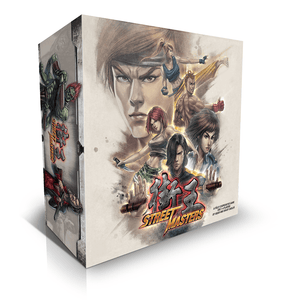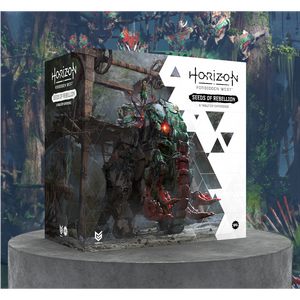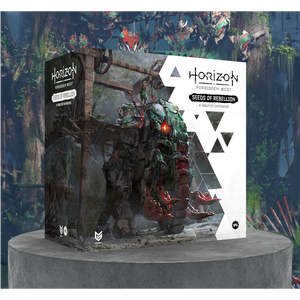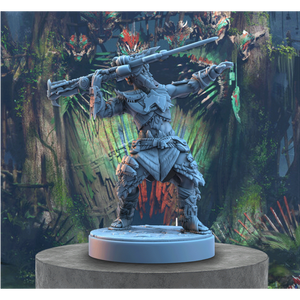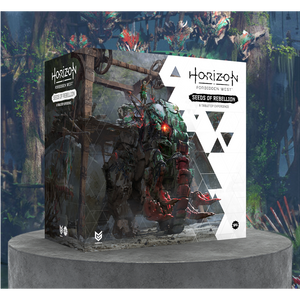Resident Evil: The Board Game is coming to Kickstarter on October 26. Follow the campaign now!
We’ve got something really special for you today, Survivors. Today, we’re checking out a brand new mechanic for the Resident Evil: The Board Game: Puzzles!
Okay, you got us. Because puzzles are such a key part (pun intended) of the Resident Evil video games, they have popped up in our Resident Evil board games before. After all, how could you make a Resident Evil game without puzzles?
HOWEVER:
For the Resident Evil 1 board game, Sherwin and the team wanted to go the extra mile to really do puzzles justice. This time, we’ve introduced a whole new system to keep you on your toes!
So, even if you’ve played the Resident Evil 2 or 3 board games already, get ready for ingenious little tabletop puzzles like you’ve never seen them before...

Designing Puzzles for the Board Game
by Sherwin Matthews
Puzzles are an integral part of the original Resident Evil video games. They’re something that not only set the video games apart when they were first released, but grew to influence a host of other games in the genre they created.
Whether it’s pushing statues around in the armour room or the water sample puzzle in the dead factory, anyone who’s played the video game will remember gnashing their teeth in frustration for what seemed like hours before suddenly working out the answer.
(And if you’re new to the series, just ask any veteran and they’ll (un)happily tell you their least favourite puzzle.)
Despite the above, in our previous two Resident Evil board games, we kept puzzles to a minimum. An odd decision, you might think, for such an iconic video game mechanic — and I’d probably agree with you, if I hadn’t spent quite a lot of time thinking about their gameplay and how to make them fit!
For Resident Evil: The Board Game, though, we wanted to change that. But before we get into how puzzles work now, let’s take a quick look at how they worked before.
During the development of Resident Evil 2: The Board Game, I wrote down all the puzzles on post-it notes before grouping them into spaces on the wall.
To my surprise, most of them happily fit into ‘fetch puzzles’ — finding an item and taking it to the correct place in order to solve the puzzle.
Obviously, there were a handful of other examples, but nowhere near enough to justify introducing a new system to the game. Because fetch puzzles were easily replicated and perfectly suited to board games, that’s the mechanic we went with.
Fetch puzzles continued into Resident Evil 3: The Board Game, where the source material admittedly contained more non-linear puzzles, but we had to be careful not to over-complicate the game due to the open world system.
Introducing open world exploration had already added plenty of complexity, and puzzles might tip it over the edge.
Puzzles in the New Resident Evil Board Game
But, when it came to Resident Evil: The Board Game, I knew puzzles would need to play a bigger role. Not only are there more of them in the original Resident Evil video game, but they’re also a massive part of that video game’s identity.
So, how did we go about adding them into the board game this time?

Choosing the Puzzles
For us, the most important thing was not to introduce something that would drag you away from the action, or leave you scratching your heads for hours on end. In the video games, stumping players for a few hours wasn’t a problem. But in our multiplayer board game? Another thing entirely.
That meant riddles were out, straight away. But then, I’ve never been much of a fan. Once you know the answer, it will never be a puzzle again.
Our next port of call was a cypher system, where you’d have to find keys and combine the numbers on them with the numbers on locks. Find the right combination? The door opens. This offered a little more replayability, but necessitated the need for a reference book full of numbered entries.
It was a step closer, but didn’t feel appropriate to the source material. And besides, the tiger statue broke the system pretty quickly!
But then the painfully obvious occurred, whilst I thought about how to replicate the gallery puzzle. Why not just recreate the puzzles in the game?
Simple, huh?
Recreating Video Game Puzzles

Resident Evil: The Board Game includes a set of four puzzle cards, each showing one of the crests that can be found in the game, against a different coloured background. These are used for a wide variety of puzzles to represent switches or objects that you need to find or activate.
Take the aforementioned gallery, for example.
Gallery Puzzle
At the start of the scenario containing this puzzle, you shuffle the four cards, then deal them face down, discarding the last card without looking at it. These cards represent a series of panels, each coloured differently, which you can activate if you find the corresponding switches. Activate the correct lights and flip all of the cards face up, and the gallery door unlocks.
But you have to be wary of the missing card. Press the wrong button, and not only will all of the cards flip face down once more, but they’ll be shuffled together again, changing the sequence. In order to truly be successful, you must search out the file containing the solution.
Sound fun? It is, and adds an entirely new dimension to the game. And that’s just one example.
Once I’d worked out how to bring these cards to the game in a way that wouldn’t force you to break from the action, a host of different options presented themselves, which we’ve merrily sprinkled throughout the game.
I can’t wait for you to get exploring for yourself and let us know your favourites as you find them!

So, What’s Your Favourite Puzzle?
That’s all from Sherwin for now!
In the meantime, we’d love to know your favourite puzzles in the video game (and discuss why everyone hates the water sample machine so much). Come talk to us about it in the Facebook group.
And if you’re not already following the Kickstarter campaign, you can do that here.

 Join us on Discord
Join us on Discord


